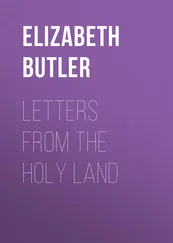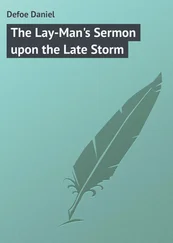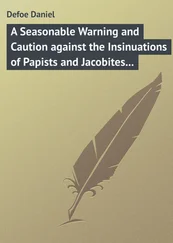Daniel Defoe - From London to Land's End and Two Letters from the Journey through England by a Gentleman
Здесь есть возможность читать онлайн «Daniel Defoe - From London to Land's End and Two Letters from the Journey through England by a Gentleman» — ознакомительный отрывок электронной книги совершенно бесплатно, а после прочтения отрывка купить полную версию. В некоторых случаях можно слушать аудио, скачать через торрент в формате fb2 и присутствует краткое содержание. Издательство: Иностранный паблик, Жанр: foreign_antique, foreign_prose, на английском языке. Описание произведения, (предисловие) а так же отзывы посетителей доступны на портале библиотеки ЛибКат.
- Название:From London to Land's End and Two Letters from the Journey through England by a Gentleman
- Автор:
- Издательство:Иностранный паблик
- Жанр:
- Год:неизвестен
- ISBN:нет данных
- Рейтинг книги:3 / 5. Голосов: 1
-
Избранное:Добавить в избранное
- Отзывы:
-
Ваша оценка:
- 60
- 1
- 2
- 3
- 4
- 5
From London to Land's End and Two Letters from the Journey through England by a Gentleman: краткое содержание, описание и аннотация
Предлагаем к чтению аннотацию, описание, краткое содержание или предисловие (зависит от того, что написал сам автор книги «From London to Land's End and Two Letters from the Journey through England by a Gentleman»). Если вы не нашли необходимую информацию о книге — напишите в комментариях, мы постараемся отыскать её.
From London to Land's End and Two Letters from the Journey through England by a Gentleman — читать онлайн ознакомительный отрывок
Ниже представлен текст книги, разбитый по страницам. Система сохранения места последней прочитанной страницы, позволяет с удобством читать онлайн бесплатно книгу «From London to Land's End and Two Letters from the Journey through England by a Gentleman», без необходимости каждый раз заново искать на чём Вы остановились. Поставьте закладку, и сможете в любой момент перейти на страницу, на которой закончили чтение.
Интервал:
Закладка:
Salisbury itself is indeed a large and pleasant city, though I do not think it at all the pleasanter for that which they boast so much of – namely, the water running through the middle of every street – or that it adds anything to the beauty of the place, but just the contrary; it keeps the streets always dirty, full of wet and filth and weeds, even in the middle of summer.
The city is placed upon the confluence of two large rivers, the Avon and the Willy, neither of them considerable rivers, but very large when joined together, and yet larger when they receive a third river (viz., the Naddir), which joins them near Clarendon Park, about three miles below the city; then, with a deep channel and a current less rapid, they run down to Christchurch, which is their port. And where they empty themselves into the sea, from that town upwards towards Salisbury they are made navigable to within two miles, and might be so quite into the city, were it not for the strength of the stream.
As the city of Winchester is a city without trade – that is to say, without any particular manufactures – so this city of Salisbury and all the county of Wilts, of which it is the capital, are full of a great variety of manufactures, and those some of the most considerable in England – namely, the clothing trade and the trade of flannels, druggets, and several other sorts of manufactures, of which in their order.
The city of Salisbury has two remarkable manufactures carried on in it, and which employ the poor of great part of the country round – namely, fine flannels, and long-cloths for the Turkey trade, called Salisbury whites. The people of Salisbury are gay and rich, and have a flourishing trade; and there is a great deal of good manners and good company among them – I mean, among the citizens, besides what is found among the gentlemen; for there are many good families in Salisbury besides the citizens.
This society has a great addition from the Close – that is to say, the circle of ground walled in adjacent to the cathedral; in which the families of the prebendaries and commons, and others of the clergy belonging to the cathedral, have their houses, as is usual in all cities, where there are cathedral churches. These are so considerable here, and the place so large, that it is (as it is called in general) like another city.
The cathedral is famous for the height of its spire, which is without exception the highest and the handsomest in England, being from the ground 410 feet, and yet the walls so exceeding thin that at the upper part of the spire, upon a view made by the late Sir Christopher Wren, the wall was found to be less than five inches thick; upon which a consultation was had whether the spire, or at least the upper part of it, should be taken down, it being supposed to have received some damage by the great storm in the year 1703; but it was resolved in the negative, and Sir Christopher ordered it to be so strengthened with bands of iron plates as has effectually secured it; and I have heard some of the best architects say it is stronger now than when it was first built.
They tell us here long stories of the great art used in laying the first foundation of this church, the ground being marshy and wet, occasioned by the channels of the rivers; that it was laid upon piles, according to some, and upon woolpacks, according to others. But this is not supposed by those who know that the whole country is one rock of chalk, even from the tops of the highest hills to the bottom of the deepest rivers.
They tell us this church was forty years a-building, and cost an immense sum of money; but it must be acknowledged that the inside of the work is not answerable in the decoration of things to the workmanship without. The painting in the choir is mean, and more like the ordinary method of common drawing-room or tavern painting than that of a church; the carving is good, but very little of it; and it is rather a fine church than finely set off.
The ordinary boast of this building (that there were as many gates as months, as many windows as days, as many marble pillars as hours in the year) is now no recommendation at all. However, the mention of it must be preserved: —
“As many days as in one year there be,
So many windows in one church we see;
As many marble pillars there appear
As there are hours throughout the fleeting year;
As many gates as moons one year do view:
Strange tale to tell, yet not more strange than true.”
There are, however, some very fine monuments in this church; particularly one belonging to the noble family of Seymours, since Dukes of Somerset (and ancestors of the present flourishing family), which on a most melancholy occasion has been now lately opened again to receive the body of the late Duchess of Somerset, the happy consort for almost forty years of his Grace the present Duke, and only daughter and heiress of the ancient and noble family of Percy, Earls of Northumberland, whose great estate she brought into the family of Somerset, who now enjoy it.
With her was buried at the same time her Grace’s daughter the Marchioness of Caermarthen (being married to the Marquis of Caermarthen, son and heir-apparent to the Lord of Leeds), who died for grief at the loss of the duchess her mother, and was buried with her; also her second son, the Duke Percy Somerset, who died a few months before, and had been buried in the Abbey church of Westminster, but was ordered to be removed and laid here with the ancestors of his house. And I hear his Grace designs to have a yet more magnificent monument erected in this cathedral for them, just by the other which is there already.
How the Dukes of Somerset came to quit this church for their burying-place, and be laid in Westminster Abbey, that I know not; but it is certain that the present Duke has chosen to have his family laid here with their ancestors, and to that end has caused the corpse of his son, the Lord Percy, as above, and one of his daughters, who had been buried in the Abbey, to be removed and brought down to this vault, which lies in that they call the Virgin Mary’s Chapel, behind the altar. There is, as above, a noble monument for a late Duke and Duchess of Somerset in the place already, with their portraits at full-length, their heads lying upon cushions, the whole perfectly well wrought in fine polished Italian marble, and their sons kneeling by them. Those I suppose to be the father of the great Duke of Somerset, uncle to King Edward IV.; but after this the family lay in Westminster Abbey, where there is also a fine monument for that very duke who was beheaded by Edward VI., and who was the great patron of the Reformation.
Конец ознакомительного фрагмента.
Текст предоставлен ООО «ЛитРес».
Прочитайте эту книгу целиком, купив полную легальную версию на ЛитРес.
Безопасно оплатить книгу можно банковской картой Visa, MasterCard, Maestro, со счета мобильного телефона, с платежного терминала, в салоне МТС или Связной, через PayPal, WebMoney, Яндекс.Деньги, QIWI Кошелек, бонусными картами или другим удобным Вам способом.
Интервал:
Закладка:
Похожие книги на «From London to Land's End and Two Letters from the Journey through England by a Gentleman»
Представляем Вашему вниманию похожие книги на «From London to Land's End and Two Letters from the Journey through England by a Gentleman» списком для выбора. Мы отобрали схожую по названию и смыслу литературу в надежде предоставить читателям больше вариантов отыскать новые, интересные, ещё непрочитанные произведения.
Обсуждение, отзывы о книге «From London to Land's End and Two Letters from the Journey through England by a Gentleman» и просто собственные мнения читателей. Оставьте ваши комментарии, напишите, что Вы думаете о произведении, его смысле или главных героях. Укажите что конкретно понравилось, а что нет, и почему Вы так считаете.












